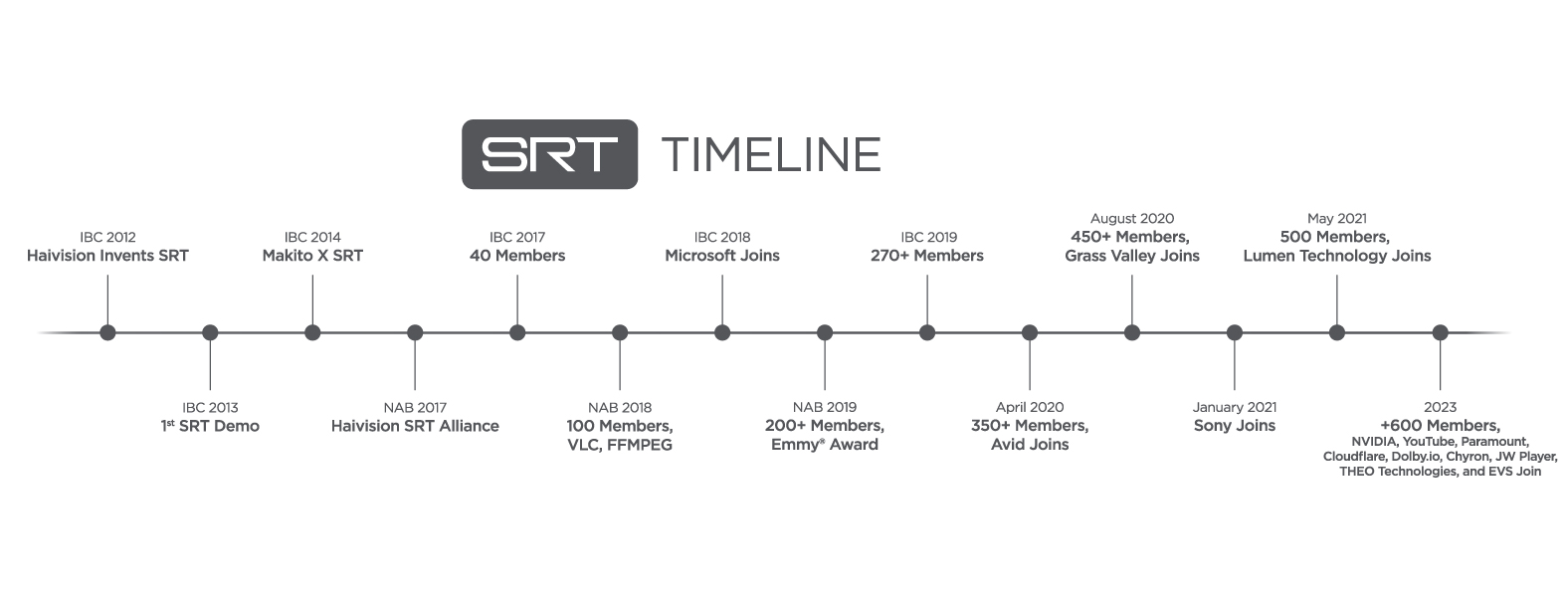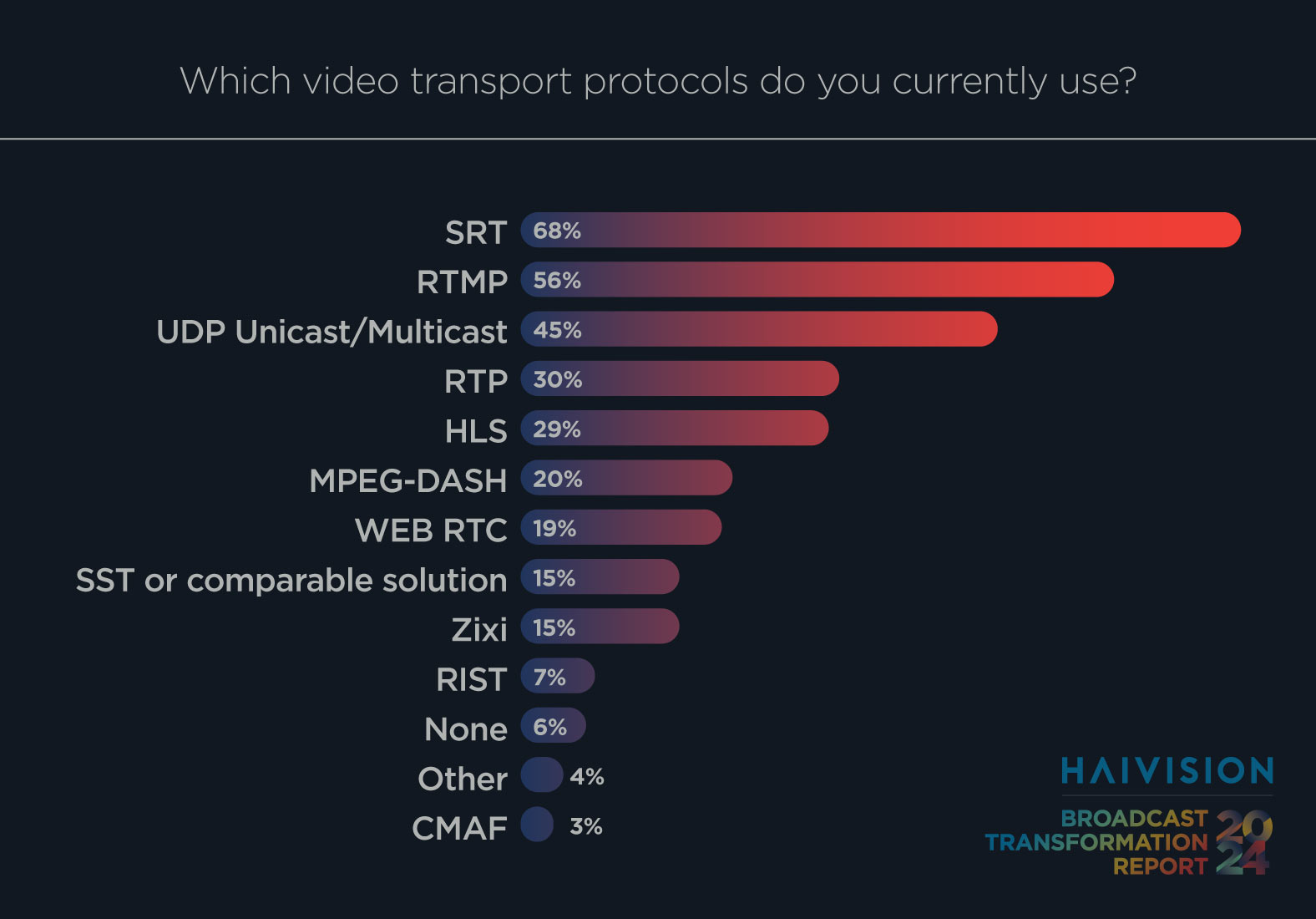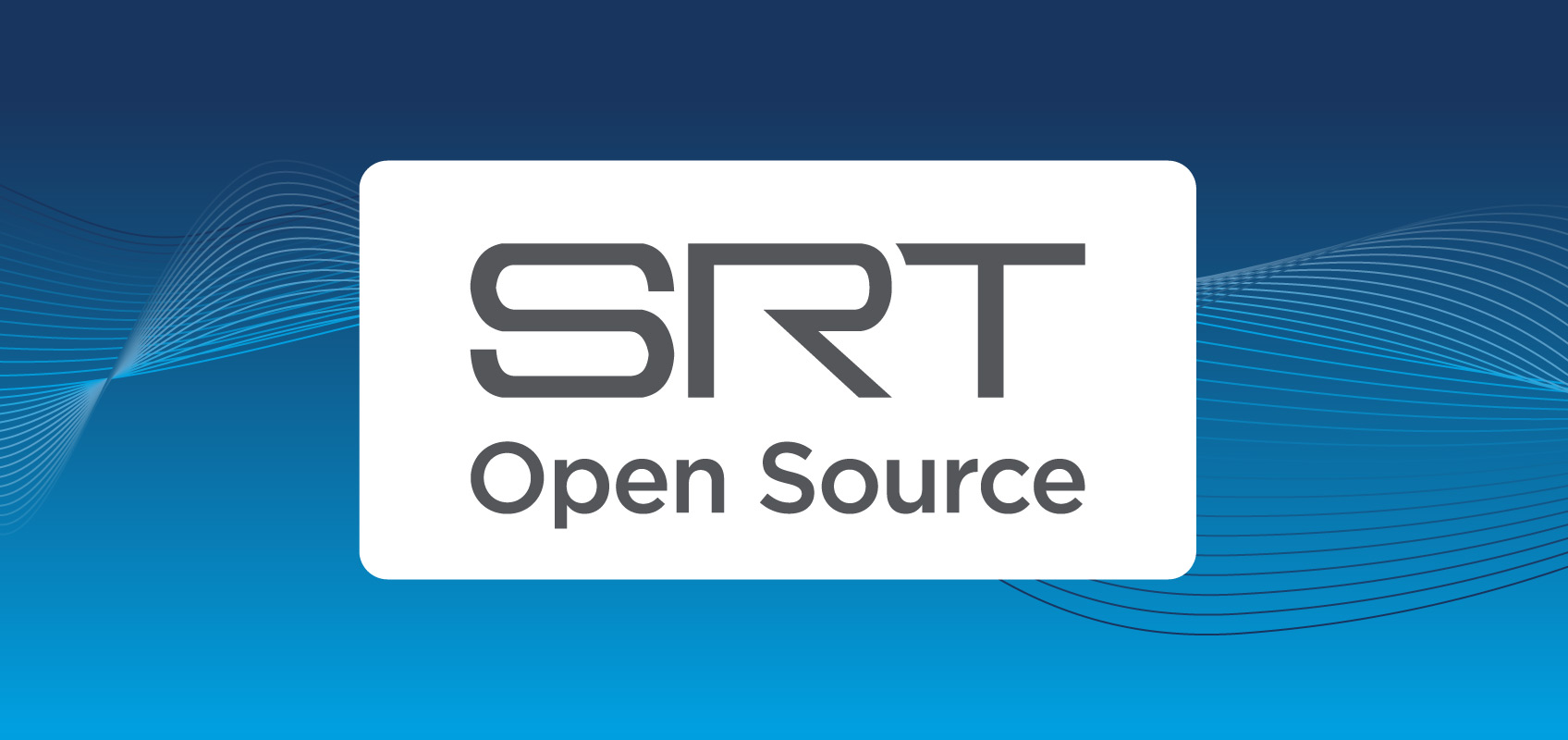It’s hard to believe, but the SRT open source protocol has existed now for over six years. To mark this milestone, we’ve put together this comprehensive guide to everything you need to know about the video streaming protocol that’s completely disrupted the way the world streams video. In this blog post, we’ll explore the benefits of SRT, how it works, who uses it, and how it powers Haivision solutions.
- What is SRT?
- A Brief History of SRT
- How Does SRT Work?
- Benefits of SRT
- How Does SRT Compare to Other Protocols?
- What is the SRT Alliance?
- Who Uses SRT?
- Haivision Solutions Powered by SRT
What is SRT?
SRT is a video streaming transport protocol and technology stack designed to connect two endpoints to deliver low latency video and other media streams across any network including the public internet. In a nutshell, SRT brings the best quality live video over unreliable networks. It accounts for packet loss, jitter, and fluctuating bandwidth all while maintaining the integrity and quality of video. With SRT, you can keep your streams secure and easily traverse firewalls.
A Brief History of SRT
Born from the need to reduce the high cost of video contribution by satellite and private networks, SRT was originally developed and pioneered by Haivision. It was publicly demonstrated for the first time at IBC 2013, and, as the technology progressed, Haivision released SRT as part of its product family and customers started to enjoy the benefits of high-quality, low latency secure video over unreliable public networks.
To encourage widespread adoption so that more companies and customers could benefit from this exciting technology, Haivision released SRT on GitHub in 2017 as an open source technology stack and protocol. Since then, support for the protocol has continued to grow and SRT is now used by almost every major streaming service, cloud platform, and broadcast solution provider.
The SRT Alliance, a collaborative community of industry leaders and developers striving to achieve lower latency internet video transport by continuously improving SRT, now has over 600 members., including AWS, CloudFlare, Google Cloud, Microsoft, NVIDIA, Paramount, SK Telecom, Sony, and YouTube, to name a few.
Haivsion was awarded an Emmy® Award by the NATAS Technology & Engineering Achievement Committee for the development of SRT and “pioneering a reliable transmission method for live contribution and distribution TV links.”

“The video industry has benefited greatly from the SRT protocol, especially on the contribution feed side for live video. Its fast adoption across software multimedia frameworks, as well as OEM, is fueled by the reliability and security it provides,”
Nishant Sirohi, Lead Video Engineer, Quality & Solutions, Paramount
How Does SRT Work?
SRT solves the latency challenges of live video transport that persist despite advances in internet streaming, such as packet loss, jitter, and bandwidth limitations. SRT provides a secure and reliable solution for low latency video transport. The protocol features:
- End-to-end security with AES 128/256-bit encryption
- Packet loss recovery through advanced low latency retransmission techniques
- Video and audio stream timing recovery
- Simplified firewall traversal
- Network health monitoring between endpoints (packet loss, latency, jitter)
For a simple explanation of what SRT does, and how it works, watch our SRT 101 video.

Benefits of SRT
SRT stands for Secure Reliable Transport and offers the following benefits:
- Pristine Quality
SRT protects against jitter, packet loss, and bandwidth fluctuation, ensuring the best possible viewing experience. - Extremely Secure
Using the same 128/256-bit AES encryption trusted by governments and organizations around the world, SRT ensures that valuable content is protected end-to-end from contribution to distribution so that no unauthorized parties can listen. - Always Reliable
No matter how unreliable your network might be, SRT can recover from severe packet loss and jitter, ensuring the integrity and quality of your video streams. - Low Latency
SRT’s stream error correction is configurable to accommodate a user’s deployment conditions. Leveraging real-time IP communications development to extend traditional network error recovery practices, SRT delivers media with significantly lower latency than TCP/IP, while offering the speed of unreliable UDP transmission without the disadvantage. - Easy Firewall Traversal
The handshaking process used by SRT supports outbound connections without the potential risks and dangers of permanent exterior ports being opened in a firewall, thereby maintaining corporate LAN security policies and minimizing the need for IT intervention. - Content Agnostic
Unlike some other streaming protocols that only support specific video and audio formats, SRT is payload agnostic. Because SRT operates at the network transport level, acting as a wrapper around your content, it can transport any type of video format, codec, resolution, or frame rate. - Open Source
SRT can be implemented using a free, open source code base. There are no royalties, long-term contracts, or monthly subscription fees required. Being open source encourages SRT’s widespread adoption and accelerates innovation through continuous collaborative development. - Interoperability
With widespread adoption comes interoperability and longevity. Users can confidently deploy SRT through their entire video and audio streaming workflows knowing that multi-vendor products will work together seamlessly. - Cost-Effective
Thanks to SRT’s security and reliability, the public internet has now become a viable option for an expanded range of streaming applications. SRT offers significant operational flexibility and cost savings compared to satellite or custom network infrastructures.
“SRT has become the gold standard for transporting live video, and by integrating it into our software-defined platform, NVIDIA is enabling users to benefit from reliability, low latency and unmatched interoperability,”
Richard Hastie, Senior Director of Professional Visualization, NVIDIA
How Does SRT Compare to Other Protocols?
The 2024 Haivision Broadcast Transformation Report, a survey of more than 800 broadcast and streaming professionals, provides a comprehensive analysis of SRT’s impact on the live video landscape and highlights the growing adoption of SRT within the broadcast industry. In this year’s report, 68% of respondents selected SRT as their top protocol of choice, followed by RTMP at 56%, and UPD Unicast/Multicast at 45%.
SRT is surpassing traditional protocols due to its performance in key areas: reliability, low latency, and future-focused technology. SRT thrives in real-world network conditions, delivering unmatched reliability. It employs sophisticated error correction and congestion control mechanisms to ensure smooth, uninterrupted video delivery. Compared to other protocols, SRT delivers a dramatic reduction in latency. This minimizes the delay between capture and playback, making it ideal for real-time applications like live broadcasting and remote production where even a slight lag can be detrimental.

What is the SRT Alliance?
As the original developer of SRT, Haivision is also a founding member of the SRT Alliance. Established in 2017, the mission of the SRT Alliance is to support the free availability of open source SRT and to foster collaborative development in order to accelerate innovation. SRT is now widely adopted and endorsed by a community of more than 600 technology vendors working together to continually develop and evolve SRT as the defacto low latency video streaming standard in the broadcast and streaming industries.
An important goal of the SRT Alliance is to make new features available to the open source community, whether they are submitted for inclusion by community developers, or if they come directly from the Haivision development team.
With an active and engaged membership, the SRT Alliance hosts updates on the roadmap as well as Interop Plugfests for developers looking to test interoperability and compatibility between different technologies using the SRT protocol. For the latest release information, visit GitHub.
“At the moment, the world is witnessing and adapting to drastic changes in the way we work and learn. Such circumstances have created a pressing demand for efficient remote communication, content production, and distance learning. By joining the SRT Alliance, we believe we can help customers to create and distribute high-quality video content with low latency in an efficient manner.”
Bruce Tanaka, General Manager of Camera System Business Division, Sony Imaging Products & Solutions Inc.
Who Uses SRT?
SRT is used by thousands of organizations globally for a wide range of applications, from IP cameras, video encoders and decoders to gateways, OTT platforms, and CDNs. SRT is being used and endorsed by major technology partners across the globe such as YouTube, AWS and Microsoft, to name a few. Not only are vendors and solutions providers embracing it, but end users like the NFL, Comcast, Al Jazeera, Fox News, Sky News, and even NASA have come to rely on SRT to power their broadcast and streaming workflows.
Haivision Solutions Powered by SRT
As the original developer of the SRT open source video transport protocol, Haivision provides a portfolio of video encoding and live video contribution solutions that leverage SRT to help our customers reliably stream encrypted, high-quality, and low latency video across any IP network. With native support for the protocol, Haivision SRT solutions provide end-to-end security, resiliency, and dynamic endpoint adjustment based on real-time network conditions to deliver the best video quality at all times. With SRT, users can optimize video contribution across unpredictable networks, like the internet, by assuring quality-of-service when faced with packet loss, jitter, latency, and fluctuating bandwidth.
Haivision SRT Solutions: Stream and Deliver High-Quality Live Video
Haivision offers a range of solutions designed to empower you with reliable, low-latency live video contribution over any network. Here are some of their key offerings:
Haivision Makito X4 Video Encoder: This versatile encoder excels at capturing pristine-quality video at low latency, supporting resolutions up to 4K UHD, quad-HD, and HDR. With native SRT integration, you can securely and reliably stream this high-quality content over any IP network.
Haivision SRT Gateway: This powerful gateway acts as a network bridge, ensuring secure and reliable routing of live video streams across different IP networks. It supports protocol conversion and path redundancy for uninterrupted video delivery.
Haivision Play Pro: This free mobile app (iOS and Android) allows you to securely play and monitor live SRT video feeds from anywhere. Compile and share streams in customized channel lists for easy on-the-go access.
Explore the full range of Haivision SRT solutions: https://www.haivision.com/products/srt-solutions/
Ready to learn more?
Here are some additional useful resources:
SRT Technical Overview
SRT Blog Posts
SRT on GitHub

